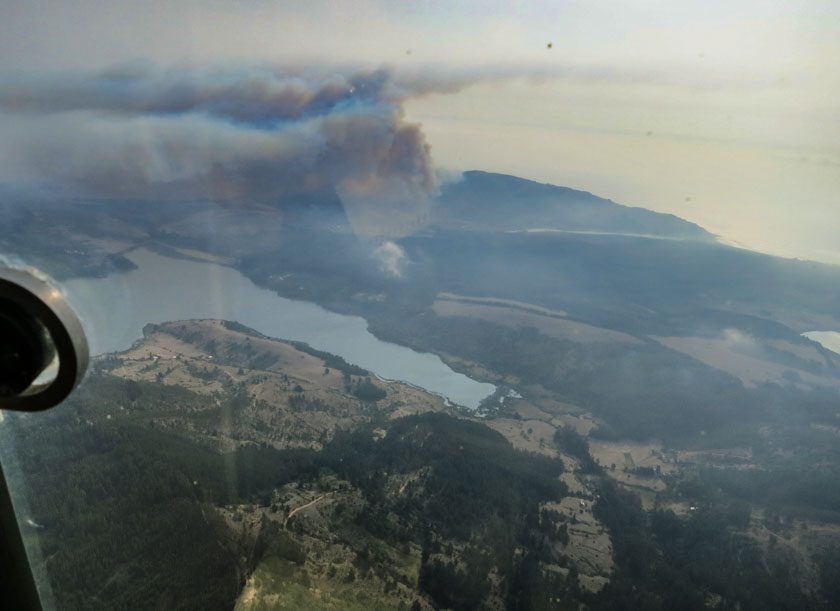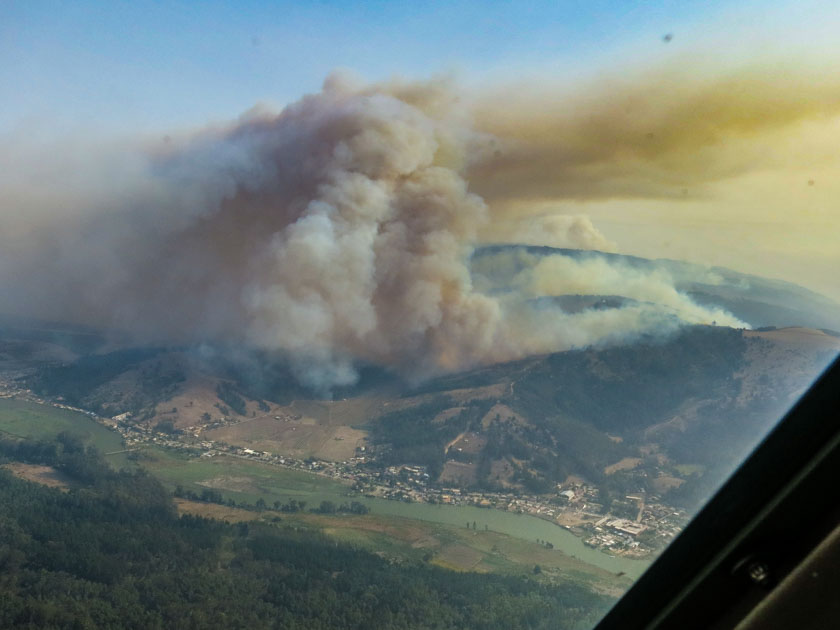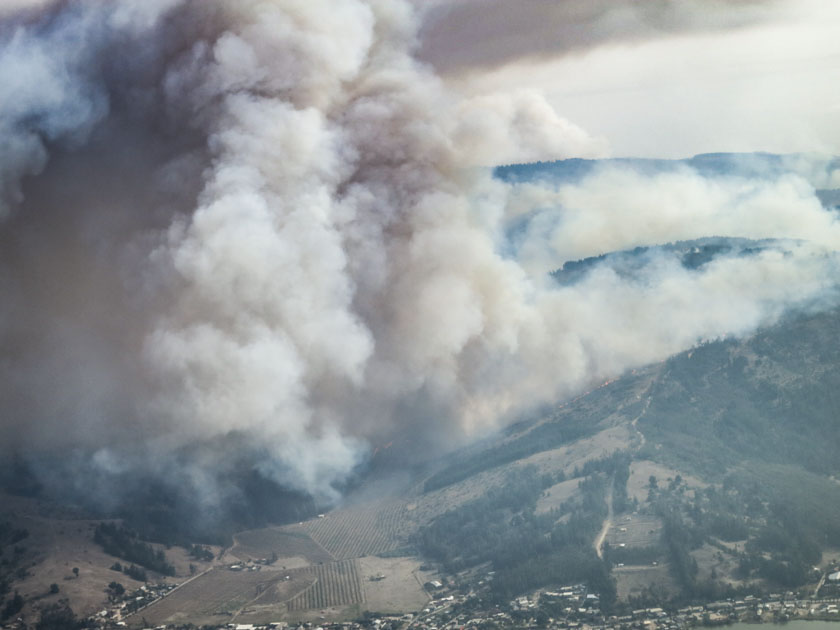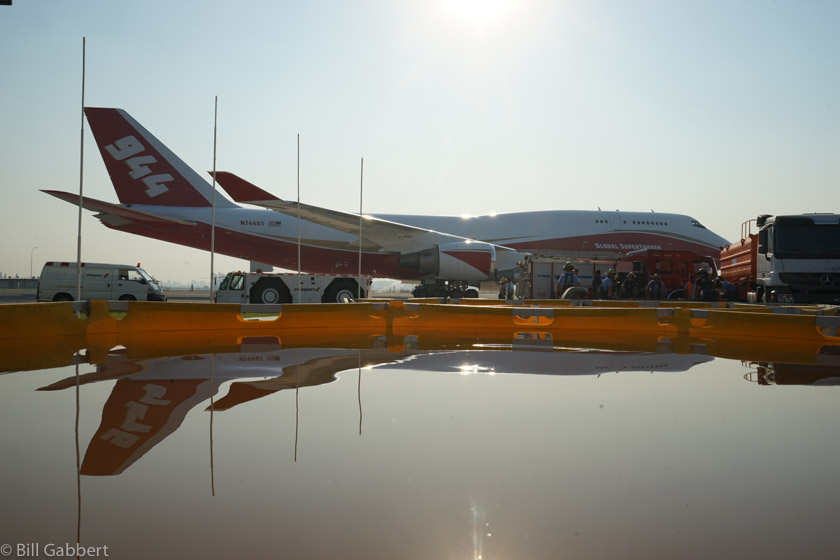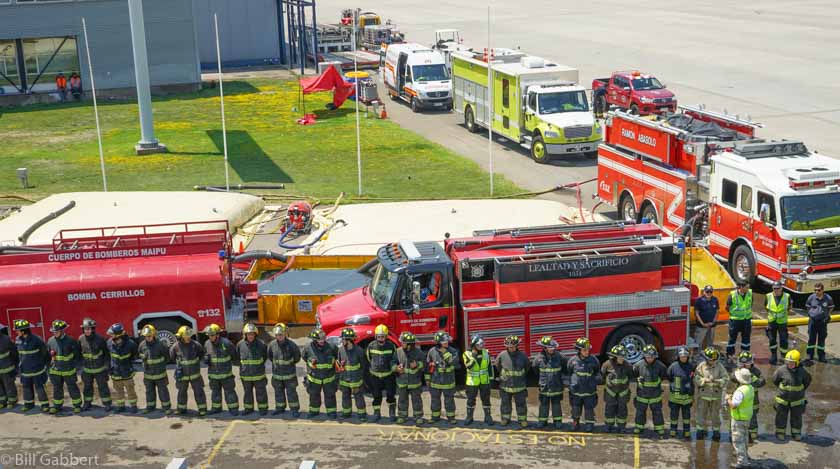Above: Wildfires in Chile detected by a satellite, January 23, 2017.
The information below was part of a briefing by Chile’s Minister of the Interior about the siege of wildfires that have been affecting the country for several weeks, in part due to an extended drought. It is translated by Google and is a little rough.
****
“In order to carry out a new evaluation and follow-up on the effects of the forest fires affecting the country, the authorities met this afternoon at the premises of the National Emergency Office (ONEMI), the third National Emergency Operations, headed by the Ministry of the Interior, Director ONEMI, Health, Public Works, Defense, Transport and Telecommunications, Energy, Conaf, Subtel, SEC, Carabineros, Firefighters and PDI.
At the conclusion of the meeting, the Minister of the Interior, Mario Fernández, reported that the situation resulting from forest fires continues to be serious, although there has been a slight improvement. “We have 42 active fires in seven regions, the most serious fires are taking place in the Sixth and Seventh Region, some are decreasing in their magnitude. As for the fires that we had worried about yesterday in the Metropolitan Region, especially in the sectors of Pirque and Alhue, we were informed that these tend to be controlled in the coming days. ”
The authority also noted that the situation resulting from these incidents is being monitored and controlled, through an increase in the provision of both material and human resources. “We have deployed air assets, machinery and more personnel including a considerable increase in the Armed Forces.” Other aspects addressed by the Minister were the support received from the private sector, mainly from the Chilean Chamber of Construction, in terms of land clearing materials for the purpose of establishing firewalls.
As for the weather conditions, these will continue to be complex and adverse to combat the fire, in this respect, yesterday (Saturday) was issued a new weather alert by heatwave, which will be in force until next week. With this, almost one month is complete (from 27 December) alerts at high temperatures to the south central part of the country, a situation which results in the conditions known as 30-30-30 .
Regarding this situation, the Director of ONEMI, Ricardo Toro, stated that “the National Civil Protection System is fully activated and all necessary resources have been made available to safeguard people’s lives, which is the main objective. Which translates into about 4000 people working in these fires, including officials of the Armed Forces, Conaf firefighters, firefighters volunteers, staff of municipalities, governorates, intendances and private companies.
In addition, the Director of ONEMI, pointed out that air resources have been added, 37 ships (between helicopters and airplanes) fighting in the affected regions plus the support of heavy machinery. In this context, it should be noted that ONEMI has shipped more than 75,000 liters of fuel, more than 9,000 bottles of water, more than 1,000 blankets, over a thousand grooming kit for men and women, 2,000 masks, thousand pairs of gloves , 6,000 food rations for 12 hours and 4,000 tools.
It should be noted that the main impact caused by this situation of forest fires is recorded in the O’Higgins Region, where 78 people are reported victims, 117 housed and 38 homes destroyed. In the Maule Region, 51 people are reported affected, 40 people are housed and 19 homes are destroyed. On the other hand, in the Metropolitan Region are reported 12 people affected and 7 homes destroyed in the commune of Curacaví.
There were also 13 houses destroyed in the commune of Bulnes, Region of Biobío.
It should be remembered that since yesterday it was decided to extend the declaration of Affected Area by Catastrophe and Catastrophe Area with a constitutional exception for the communes of Licantén and Hualañé in the Region of Maule and for the commune of Bulnes in the region of Biobío. It should be noted that this is added to the provinces of Colchagua and Cardenal Caro in the Region of O’Higgins, and the communes of Cauquenes and Vichuquén in Region VII.
Finally, Minister Fernández pointed out that in the affected places central government authorities have been deployed, and monitoring of situations resulting from the effects of forest fires will continue.”
